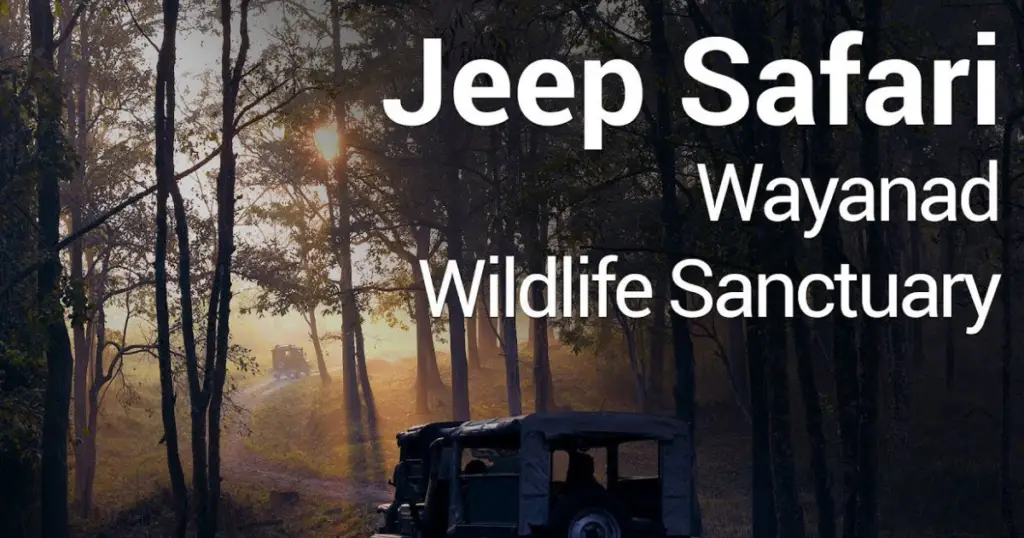Wayanad Wildlife Sanctuary: A Deep Dive into Kerala’s Biodiversity Hotspot

Wayanad Wildlife Sanctuary: A Deep Dive into Kerala’s Biodiversity Hotspot
Hey there, fellow nature lover! Ever dreamt of a place where elephants roam free, tigers prowl in the shadows, and the air hums with the songs of a hundred different birds? Well, let me tell you about a spot that might just be the place of your dreams: Wayanad Wildlife Sanctuary. Nestled in the heart of Kerala, this sanctuary is more than just a pretty place, it’s a vibrant ecosystem teeming with life and waiting to be explored. So, grab a cup of tea, get comfy, and let’s dive in!
Understanding Wayanad Wildlife Sanctuary
Location and Geography
Wayanad Wildlife Sanctuary sits pretty in the Wayanad district of Kerala. It’s not just one big chunk of forest, but rather two separate areas called Muthanga and Tholpetty. Muthanga is in the south, and Tholpetty is towards the north. What’s really cool is that this sanctuary is a crucial part of the Nilgiri Biosphere Reserve, meaning it’s connected to other protected areas in neighboring states: Nagarhole and Bandipur in Karnataka, and Mudumalai in Tamil Nadu. Think of it as a giant wildlife corridor! The landscape here is a mix of undulating hills, valleys, rivers, and wetlands, making it a real treat for the eyes.
A History of Conservation
This place has been a safe haven for wildlife for quite some time. The sanctuary was officially established in 1973. Later, in 1991-92, the Muthanga range became part of Project Elephant, a special initiative to protect those gentle giants. It’s also worth mentioning that these deep forests were a shelter for Pazhassi Raja during his rebellion against the British, which adds a layer of historical significance to this natural haven. As part of the Nilgiri Biosphere Reserve, this area has been recognized by UNESCO as a World Heritage Site, highlighting its importance on a global scale.
Flora and Fauna: A Biodiversity Hotspot
If you’re into wildlife, you’re in for a treat, because this sanctuary is brimming with biodiversity.
- Flora: The forests here are super diverse, ranging from moist deciduous, dry deciduous, and semi-evergreen types. You’ll spot trees like teak, rosewood, eucalyptus, and bamboo reaching for the sky. The undergrowth is just as fascinating, with lots of unique plants and herbs creating a vibrant tapestry of green. There are even some rare plant species and medicinal plants that you might not see anywhere else.
- Fauna: Now, let’s talk about the animals! The stars of the show are definitely the Asian elephants and tigers. In fact, Wayanad Wildlife Sanctuary boasts the largest population of tigers in Kerala. But there are plenty of other amazing creatures to see:
- Mammals: Keep your eyes peeled for leopards, gaur (Indian bison), sambar deer, wild boars, sloth bears, jungle cats, monkeys, and if you’re very lucky, the rare slender loris.
- Reptiles: You may encounter monitor lizards, golden tree snakes, coral snakes, green whip snakes, and pit vipers.
- Amphibians: The sanctuary is also home to diverse amphibians like the ornate microhylid, red microhylid, Ceylon kaliula, triangle-spotted Ramnella, bi-colored frog, bronze frog and Malabar gliding frog.
- Avian Species: If you love birds, bring your binoculars! Wayanad is a birdwatcher’s paradise! You might see Malabar grey hornbills, white-bellied woodpeckers, peafowl, and lots of other migratory birds. And, if you are really observant, you may spot the rare blue-bearded bee-eater.
- And don’t forget about the countless butterflies and insects that add even more color to this already vibrant place.
Climate and Best Time to Visit
The weather here is generally pleasant, with temperatures ranging from 13°C to 32°C, and it gets a good amount of rain, about 2000 mm annually. The best time to visit really depends on what you’re hoping to see:
- For the best chance of spotting animals, visit during the summer months (April to June) when they gather near water sources.
- If birdwatching is your thing, the cooler months (October to March) are perfect.
- The monsoon season (July to September) turns the sanctuary into a lush, green wonderland, but visibility might be poor and safaris may be limited.
Experiencing the Sanctuary: Activities and Options
Jeep Safaris
The most common way to explore the outer parts of the sanctuary is by jeep safari. These usually happen in the mornings (7:00 AM – 10:00 AM) and afternoons (3:00 PM – 4:30 PM). Just so you know, the jeeps here aren’t roofless like in some other parks. Also, each jeep is accompanied by a forest guide who knows the area well.
Elephant Rides
If you’re feeling adventurous, you can arrange an elephant ride with special permission. Imagine seeing the forest from the back of one of these majestic creatures!
Birding Tours
For the bird enthusiasts, there are guided birding tours with professional birders and naturalists. Be sure to bring your binoculars, notebook, and zoom-lens camera so you don’t miss a thing! A monopod is also a good idea to help stabilize your camera.
Trekking and Nature Walks
You can also explore the sanctuary on foot with a 12 km walking tour. Wear comfortable clothes and shoes, and don’t forget to bring water. There are also guided treks available if you want some local expertise.
Other Activities
Don’t forget to check out the elephant camp, where you can watch baby elephants being trained!
Planning Your Visit: Practical Information
Entry Fees and Permits
To visit the sanctuary you will need a permit from the forest authorities. Entry fees vary for Indians and foreigners, so make sure to check the current rates before you go. Also, there are fees for cameras, vehicles, and the jeep safari.
What to Bring
When you go, dress to blend in! Wear dark and dull colors like greens and browns. Be sure to pack sun protection, mosquito repellent, comfortable shoes, and water bottles.
Safari Tips
For the best animal sightings, go on a safari early in the morning or late in the afternoon. Be patient, respect the wildlife, and maintain silence to avoid disturbing the animals.
Accommodation and Food
You’ll find accommodation and food options in nearby towns like Sultan Bathery, with several resorts and food stalls near the sanctuary.
Transportation
You can reach the sanctuary by air, train, or road. The closest airport is Calicut airport, and the nearest railhead is Kozhikode Railway Station. If you’re taking the bus, the main stop is Sulthan Bathery.
Respect for the Environment
Remember, the forest is a plastic-free zone, so avoid bringing any plastic items, and do not litter.
Conservation and Community
Conservation Challenges
Like many natural areas, Wayanad Wildlife Sanctuary faces its share of challenges. There is the ever-present threat of human-wildlife conflict, poaching, habitat encroachment, and, of course, the effects of climate change. The decline of the vulture population is also a concern, attributed to a banned drug that’s still being used. The sanctuary has installed anti-poaching stations to help combat these issues.
Conservation Efforts and Success Stories
There are many ongoing projects to protect the flora and fauna of the sanctuary. The sanctuary plays a role in Project Tiger, as well, to help conserve these magnificent animals. The forest department of Kerala aims to strike a balance between protecting the tribal communities and the wildlife.
The Role of Tribal Communities
The area is home to several local tribes, including Paniyas, Kattunaickans, Kurumas, Kurichiyas, Adiyans, and Ooralis. These communities have a deep traditional ecological knowledge and contribute to conservation efforts.
Unique Perspectives and Stories
Visitor Experiences
Many visitors have had wonderful experiences in the sanctuary, so remember that every visit will bring something new. Keep an eye out for the unexpected!
Guide Perspectives
Local guides have years of experience in these forests so try to engage with them when you go.
Researcher Insights
The inner zone of the sanctuary is open to researchers who can study and learn from this incredible ecosystem.
Beyond the Sanctuary: Nearby Attractions
Don’t forget to check out some of the nearby attractions while you are in the area like Banasura Dam, Edakkal Caves, Chembra Peak, Muneeswaran Kunnu Viewpoint, Seetha Devi Temple, and Begur Reserve Forest.
Conclusion
Wayanad Wildlife Sanctuary isn’t just a place to see animals; it’s a place to connect with nature and learn about the importance of conservation. So, whether you’re an adventure seeker, a wildlife enthusiast, or just looking for a peaceful escape, this sanctuary will not disappoint!
Call to Action
What are you waiting for? Come and experience the wonders of Wayanad Wildlife Sanctuary. Share this post, leave a comment, or ask any questions you might have, and start planning your trip today!
I hope this blog post captures the essence of Wayanad Wildlife Sanctuary and inspires you to visit this incredible place!

